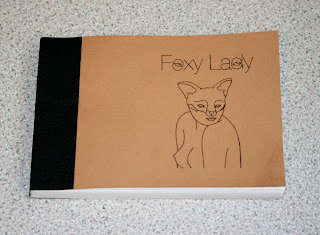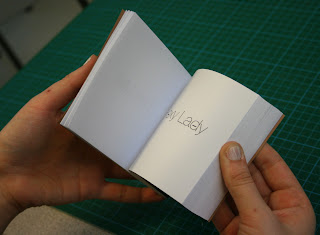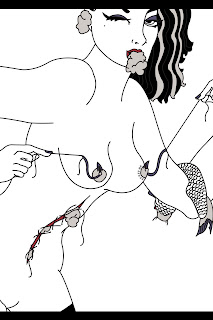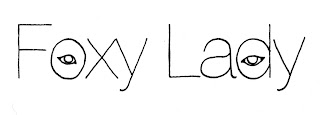When we were first briefed on Visual Language, I felt excited and motivated by the amount of ideas that sprung to mind. However, I think I let myself down by not putting all of these in to action much sooner. I spent much of the Christmas holidays deliberating over how I could use my chosen theme of taxidermy to produce something visually pleasing, interesting and different to work I have done before. Once back at college I solidified my ideas a little more by experimenting with collage and illustration, and decided to make an animation rather than a book. I chose to illustrate it because I personally prefer hand-drawn animation and enjoy doing it. However, creating over one hundred images took a lot longer than expected and as the exhibition and deadline approached, I decided I would still put the images I had together as an animation, but would also bind them in to a flipbook to have something a little more substantial than a 20 second long animation.
I was originally interested in using taxidermy as a theme so I could document individual taxidermists’ work, and find out a bit more about why and how people get in to the profession. However, I realised early on in the brief that the best way to do so would be photography and text, and neither of these appeal to me. I am definitely not a photographer and illustration just didn’t seem to be the right method to use. So instead I decided I wanted to make something less serious, and create an animation that was fairly comical but also dark. The visual story of a half-woman/half-fox creature whose own face evolves in to scissors and chops the top of her head off, then gets stuffed and stitched make the idea of taxidermy more relatable to a human and shows how vulnerable an animal can actually be.
I encountered a few problems when preparing my image sequence to be bound as a flipbook. Firstly, I had to edit each photo individually because the paper I had used to illustrate on to was slightly off-white, and therefore would have printed a strange colour on to white paper. After much repetitive playing around with levels on Photoshop and re-sizing images so they would sit on the same place on each page, I had my finished images. I have now learnt that I should never use the guillotine in college for anything I need to be completely straight, as I used the studio one to cut my pages down to size (using the crop marks I had set on InDesign) and they ended up all slightly different sizes. Fortunately I was able to even them all out in the Vernon Street print room, and the binding process was very simple and went smoothly.
Despite having my book and animation ideas sorted, I was still unsure as to what I wanted for my wall piece. I didn’t want to use any images similar to those in my animation and so decided to do something completely different, but still sticking to the theme of taxidermy. Plus, I felt I had concentrated the vast majority of my time on my flipbook and animation, that the wall piece and postcard became more of an afterthought. I’m disappointed I didn’t leave myself enough time to use a drop in session and screen print my taxidermied lady illustration, but I printed it out in the professional print room on matt A2 paper instead. I chose to use the same image for my postcard to make it more like how it is in an art gallery as I also thought from reading the brief that the postcards were to be sold.
I have some regrets about how I tackled this brief. Firstly, I wish I had documented more of my processes through photography to show the making of the flipbook in action e.g. me sitting at the light box drawing each one. I feel this gives you more of an insight in to how I made my pieces, and makes a blog more interesting to look through. Once again, I should have thought more about the time we had to complete the brief and planned around this. I should have used my time off at Christmas more wisely if I wanted to produce the standard of work I feel I am capable of. Although I am pleased with how everything came together in the end.
My flipbook is just as I wished it would be and functions pretty well. Despite not having done in time for the exhibition, I have since given it to people to trial and have had good feedback. Maybe next time I would consider a slightly less weighty paper and see if it could flip slightly easier. This brief has reminded me of what I really enjoy, which is animating. Next time I would like to try making even more detailed flipbooks of different shapes and sizes, with different binds. I’m glad I had a couple of days in the Vernon Street print room at the beginning of this brief too, as it has taught me more of what is available for me to use in the future, and how to do so through making mock up books. I am also glad that I had the opportunity to use InDesign, even if only briefly. I have been to tutorials on the programme before, but never really had to the chance to apply it to any of my work. Paul Price was extremely helpful and taught me how to fit my images to each page and prepare them for print. This is a skill I feel will be useful in the future.
The biggest thing Visual Language has shown me is that I am capable of visualising an idea and making it a reality. I often have a head filled with ideas and don’t follow them through because I underestimate myself a lot. I am definitely not completely satisfied with all my outcomes of this brief, as I’m still trying to learn the best way to utilize my time and make the best of myself. But I am very happy with my flipbook, which was what I focused on the most.









